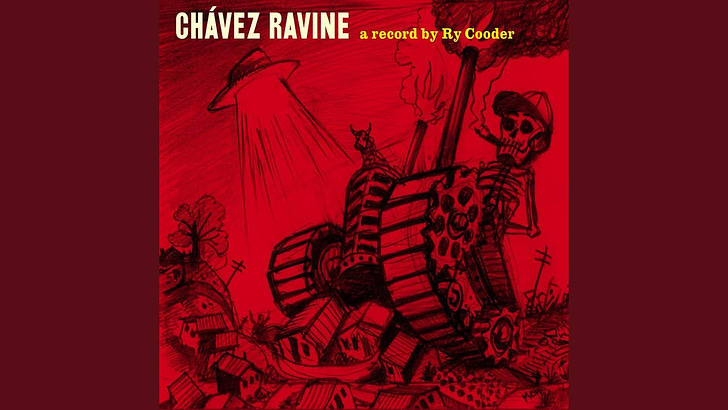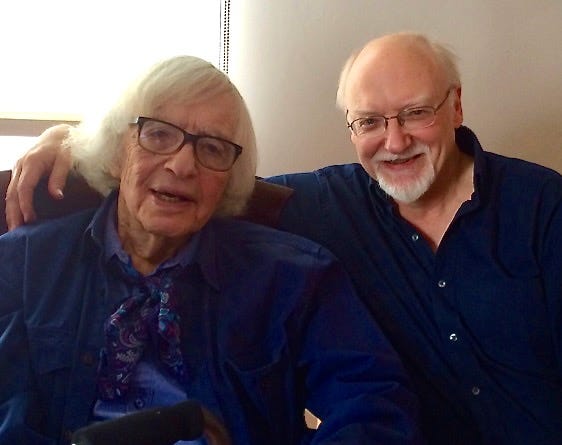Greg Mitchell is the author of more than a dozen books including “The Tunnels” and “The Campaign of the Century” and now writer/director of three award-winning films aired via PBS, including “Atomic Cover-up” and “Memorial Day Massacre” (up for an Emmy). You can still subscribe to this newsletter for free.
After the Dodgers’ humiliation of the Yanks last night, I’m happy for my friend and co-author on two books (“Hiroshima in America” and “Who Owns Death”) and numerous articles, the great Robert Jay Lifton, who was a Dodgers fan back in Brooklyn and still follows them avidly today, at age 98. For years he even signed some of his notes to me "LaSorda” or “Tommy L.” and we attended a Dodgers-Mets game at Shea Stadium or CitiField almost every year for about 20 years.
Speaking of LaSorda, the Dodgers’ longtime skipper: Last time Dodgers clinched a Series in NY, I was there, in 1981. With my friend John, I made my way to box seats behind Dodgers dugout as it was not a tight game at the end. John, a huge lifetime Yankees fan, ran on field just after last pitch and slapped Tommy LaSorda on the back as Tommy waddled to the infield for a celebration.
Finally, I had to recall often during the Dodgers-Mets playoff and then the Series one of the best albums of this century, Ry Cooder’s 2005 “Chavez Ravine.” It tells the story—largely using the “native” music of East L.A. and classic local singers (in the manner of his “Buena Vista Social Club”) plus Ry on guitar and some vocals and his son Joachim on percussion—of how hundreds of Mexican-American families were booted out of their longtime communities to make way for a housing project in the 1950s, which never materialized, so the land was then offered to the Dodgers for their move from Brooklyn. Presto: “Dodgers Stadium,” in the old bowl of what Vin Scully and other announcers insisted on calling “Shuh-VEZ Ravine” and not “CHA-vez Ravine,” or mentioning what happened there.
There too much history and tragedy to recount here but you could start with this article on the making of the album or buy the damn album yourself. A few selections below, which also include references to the Zoot Suit Riots and a UFO vistiitation—but also here are lyrics from the most moving song: a former resident, who now works as a parking attendant at the stadium, explains where former personal landmarks in his life there are now occupied by areas on the ball field. It is titled “Third Base, Dodgers Stadium.”
Mister, you’re a baseball man
As anyone can plainly see
Greatest game in this great land
Take a little tip from meI work here nights parking cars
Underneath the moon and the stars
Same ones that we all knew
Back in 1952And if you wanna know
Where a local boy like me is coming from—
3rd base, Dodger Stadium2nd base, right over there
I see Grandma in her rocking chair
Watching linens flapping in the breeze
And all the fellows choosing up their teamsBack around the high school ball
Johnny Greeneyes had his shoeshine stall
In the middle of the 1st base line
Got my first kiss, Florencia was kindNow, if the dozer hadn’t taken my yard
You’d see the tree with our initials carved
So many moments in my memory
Well sure was fun, ‘cause the game was freeHey Mister, you seem anxious to go
You’ll find that seat in the 7th row
Behind home plate, we used to meet
When we were young, we had dreamsJust a place you don’t know
Up a road you can’t go
Just a thought, laid to restYou care to know where I’m gonna go
When I hit my last home run
3rd base, Dodger Stadium
3rd base, Dodger Stadium
3rd base, Dodger Stadium
“Onda Callejera”
“Los Chucos Suavos”
“Poor Man’s Shangri-La”
“Muy Fifi”
“Chinito Chinito”
“Three Cool Cats” (by Leiber-Stoller)
“El UFO Cuyo” (with daughter-in-law Juliette Commagere)




Thanks for the history lesson; I never knew that about Chavez Ravine. My dad was born and raised in Brooklyn, and though he already was in the Army by the time the Dodgers moved, I think he never really got over their move to LA. I did make the mistake of asking him if he was pulling for the Yankees in the ‘77 series (I knew vaguely that he was from New York), which is when I got a stern lesson about where the Dodgers came from and the fact that Dodgers fans NEVER pulled for the Yankees.
After the Dodgers moved to LA, and before Dodger Stadium was built, they played in the Coliseum. My Mom and Dad lived in an apartment next to the stadium. Dad told me that he could watch a game there on tv, and whenever there was was a fly ball, he could look out his window and see the ball if it was high enough to clear the top of the stands.